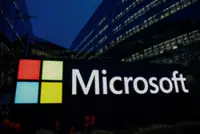TRADING in foreign exchange (forex) is not easy. It requires a lot of research on matters ranging from macro-economic factors to political changes. Hence, very rarely do individuals trade in forex on their own.
It is done by financial institutions such as banks for their customers who may want to hedge their profits or cost.
Already a subscriber? Log in
Save 30% OFF The Star Digital Access
Cancel anytime. Ad-free. Unlimited access with perks.





